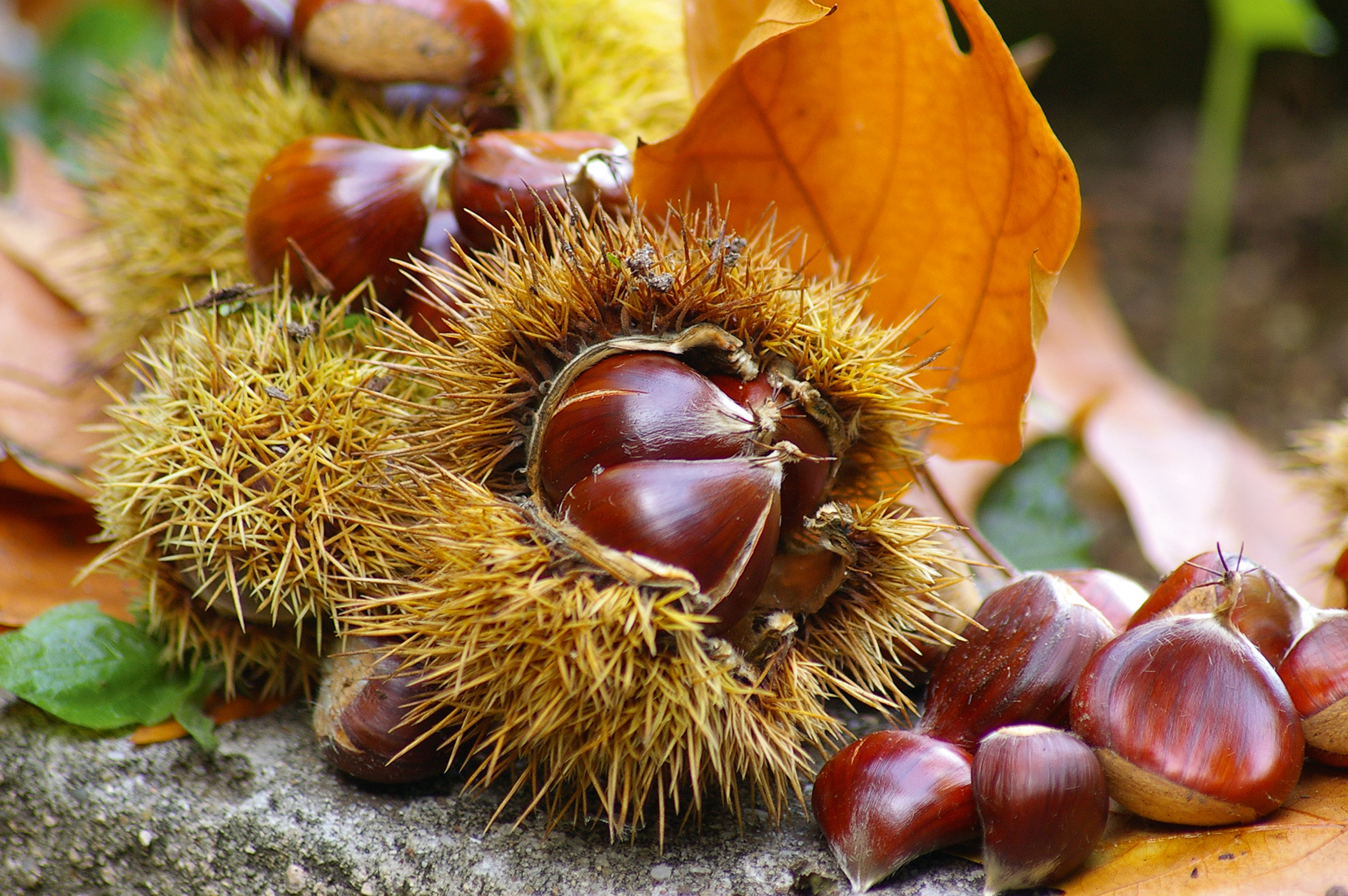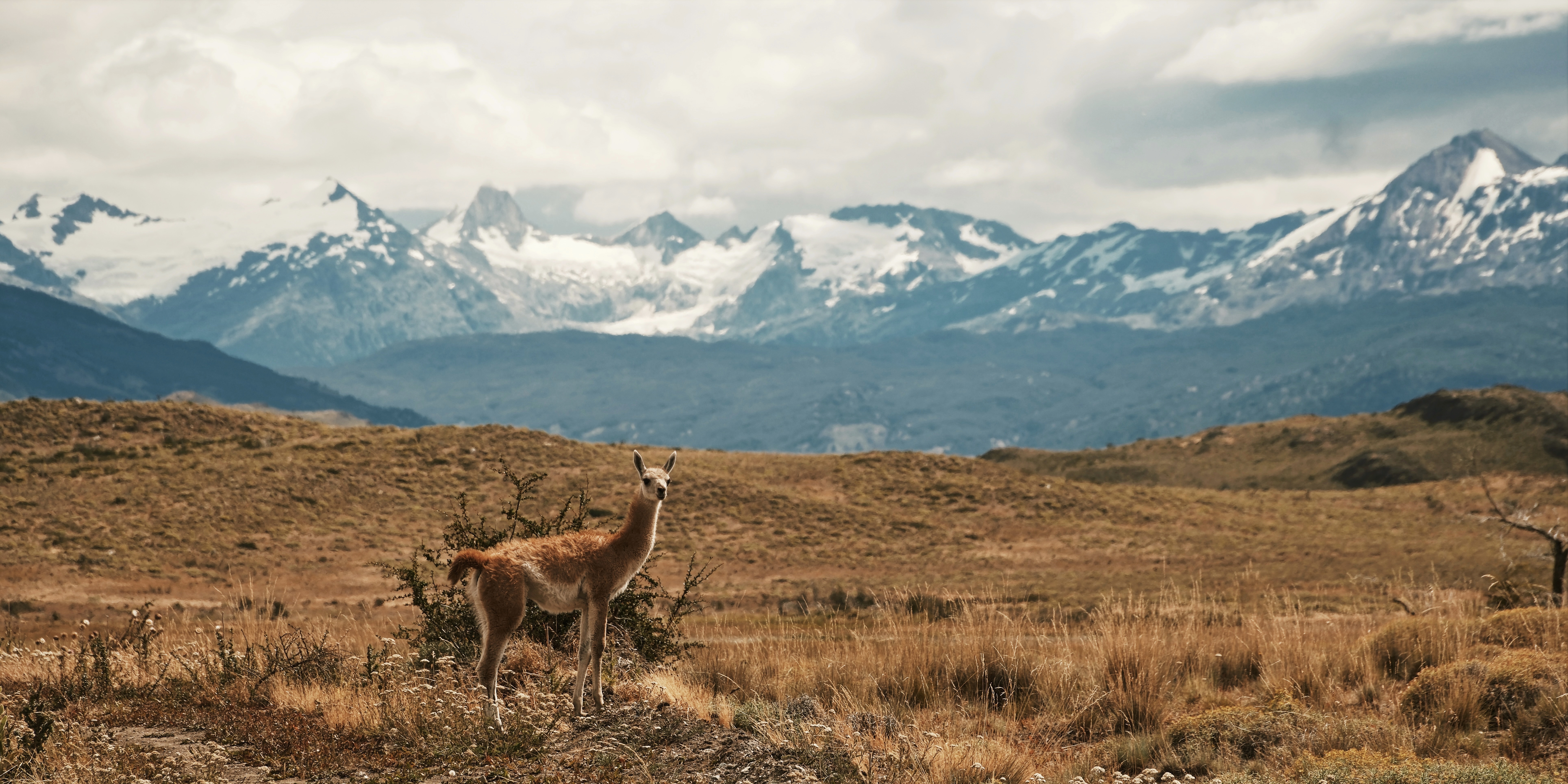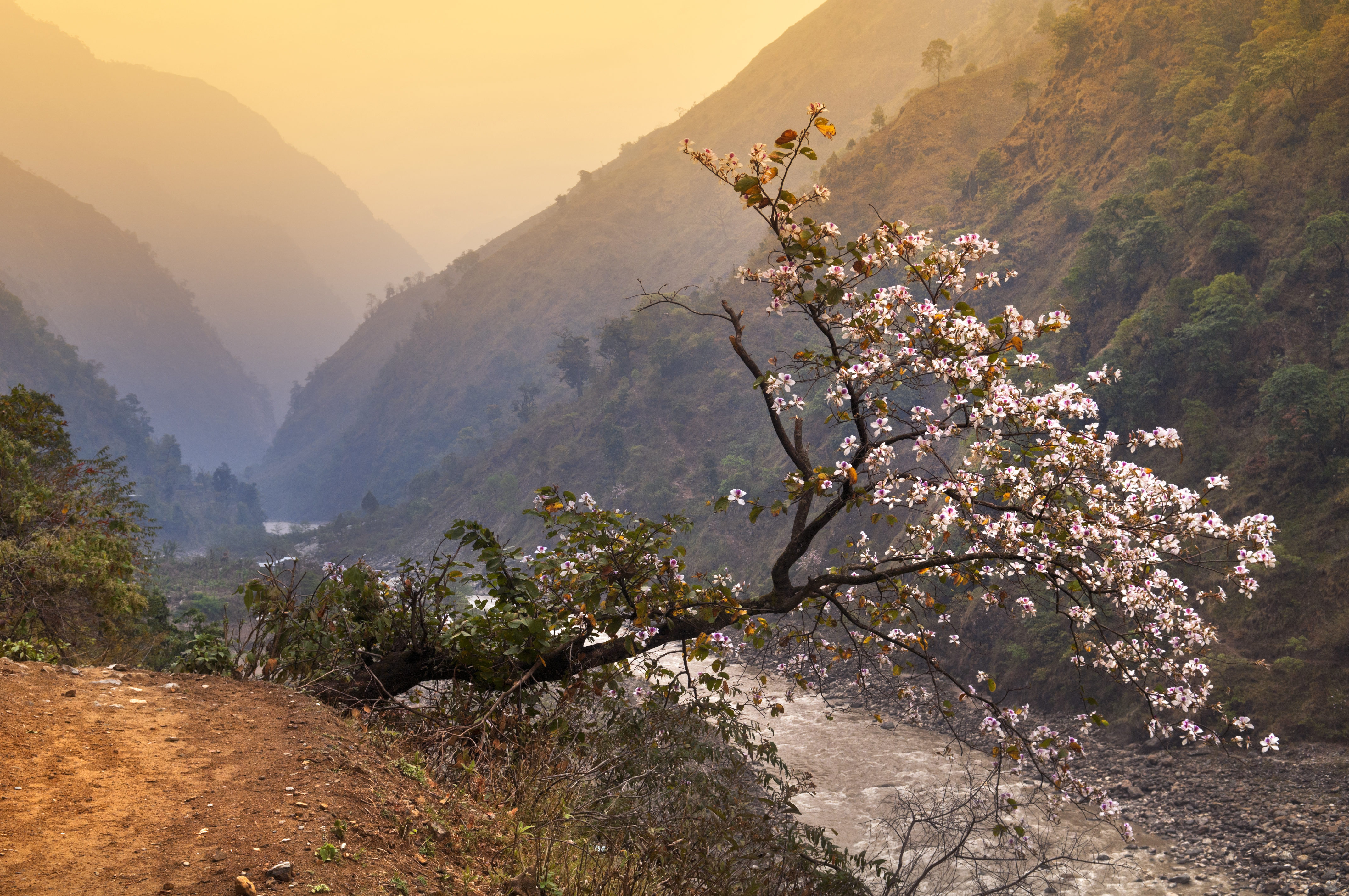What to do with sweet chestnuts, from roasting over an open fire to adding zip to burgers and brownies
Mark Diacono says that autumn is synonymous with sweet chestnuts — and he has all sorts of ways to make the most of a seasonal treat.


Sweet chestnuts are everything a strawberry isn’t. Whereas the latter is all sun-warmed succulence enjoyed the instant it’s picked, only a few months from planting, sweet chestnuts might be the definition of slow food. For a year or two, they act like an ambivalent lover, offering scant encouragement by way of a few — and I do mean a few — chestnuts and it is your job to keep the faith. Unseen, long roots push deep in search of nutrients and water: eventually, this expansion is mirrored above ground, and when it is, all is quickly forgiven.
Autumn has become synonymous with sweet chestnuts for me. Their earthy, sweet nuttiness perfectly suits the short days and dropping temperatures and I love the festive cold-backs-and-warm-faces palaver of cooking the first of the harvest, balanced on an ill-cleaned shovel over a blazing fire. As an old friend often reminds me, smoke is an ingredient and rarely do I feel it more than then. It’s also this time of year that I planted my first sweet chestnuts and am usually organising for trees to go to those whose gardens, orchards or nutteries I have designed.
You do need a little space to grow sweet chestnuts — I allow about eight yards between them. You’ll need more than one, as even self-fertile varieties, such as ‘Marigoule’, are more productive in company. If you have the space, chances are you have the conditions: chestnuts prefer well-drained loamy soil in a sunny location, but are fairly tolerant of anything that’s not waterlogged or chalky.
Pruning is minimal, too: snip them into a shape you like and to remove dead or crossing branches. It’s possible to grow sweet chestnuts from seed, but they won’t come true to the parent and the time to harvest is considerable. I recommend newer, grafted varieties, such as ‘Bouche de Bétizac’ and ‘Marigoule’, which are delicious, high yielding and productive quicker than most.
Although sweet chestnuts hardly call on you for care and maintenance, autumn is the time of year you need to switch on. The kernels often swell late in the season, just when you think they might come to nothing; it pays to water them through dry spells from late summer. Depending on latitude and variety, harvest time is late September to mid October: there is no mistaking when, as the nuts and leaves begin their surrender to gravity together.
"I use them in soups, stews, burgers, stuffings and marron glacé... and chocolate cakes and brownies are even better with a few bashed handfuls"
Harvest any that are on the ground or if their husks are splitting on the tree; be quick or the wildlife will tuck in. Once the trees are producing well, I tend to harvest every other day, as the nuts ripen gradually over a week or two.
Any that haven’t opened naturally can be released from their spiky husks by rolling the sole of your boot over them. Gloves are a good friend when harvesting.
Sign up for the Country Life Newsletter
Exquisite houses, the beauty of Nature, and how to get the most from your life, straight to your inbox.
Once picked, chestnuts need a couple of days in the sun or undercover to dry and encourage the starches to turn to sugars, improving both their flavour and texture. Store any you are going to eat in the following few weeks in paper bags in a fridge. Chestnuts freeze very well once blanched. Add them to a pan of boiling water for five minutes, drain and plunge them into cold water and let them cool for five minutes. Peel immediately and, when completely cold, freeze them in batches of a size to suit your needs.
I eat plenty roasted, with a small cut in the point of each to stop them exploding in the heat. I have one of those old-school chestnut roasters, but when I can’t remember where I left it the previous year, I might use an old shovel or frying pan.
They roast almost as well — if less romantically — in a hot oven: 25 minutes at 200°C should do it. However they are cooked, allow them to cool a little before peeling: the well-charred shell should come away easily from the smoky sweet kernel. If you like a single malt or dark chocolate, I can recommend either (or, indeed, both) to accompany them in the light of the flames.
Once your trees are properly productive, you are unlikely to get through all of the fruit by roasting alone. I use them in soups, stews, burgers, stuffings and marron glacé. They make an exceptional jam, a wonderful chestnut cream, when puréed with brown sugar and vanilla, and chocolate cakes and brownies are even better with a few bashed handfuls stirred into the mix.
Mark is lucky enough to spend most of his time eating, growing, writing and talking about food. He has written fourteen award-winning books, including A Year at Otter Farm and A Taste of the Unexpected (both won Food Book of the Year, and Garden Book of the Year). Known for growing everything from Szechuan pepper to pecans to Asian pears, Mark's refreshing approach to growing and eating has done much to inspire a new generation to grow some of what they eat. He was involved in the early days of River Cottage, appearing in the TV series, and writing four River Cottage books. Mark writes to a global audience on his best-selling Substack: Mark Diacono’s Abundance.
-
 'This wild stretch of Chilean wasteland gives you what other National Parks cannot — a confounding sense of loneliness': One writer's odyssey to the end of the world
'This wild stretch of Chilean wasteland gives you what other National Parks cannot — a confounding sense of loneliness': One writer's odyssey to the end of the worldWhere else on Earth can you find more than 752,000 acres of splendid isolation? Words and pictures by Luke Abrahams.
By Luke Abrahams Published
-
 The man who trekked Bhutan, Mongolia, Japan, Tasmania and New Zealand to bring the world's greatest magnolias back to Kent : 'A whirlwind of charm and energy... and a prince among plantsmen'
The man who trekked Bhutan, Mongolia, Japan, Tasmania and New Zealand to bring the world's greatest magnolias back to Kent : 'A whirlwind of charm and energy... and a prince among plantsmen'Magnolias don't get any more magnificent than the examples in the garden at White House Farm in Kent, home of Maurice Foster. Many of them were collected as seed in the wild — and they are only one aspect of his enthralling garden.
By Charles Quest-Ritson Published